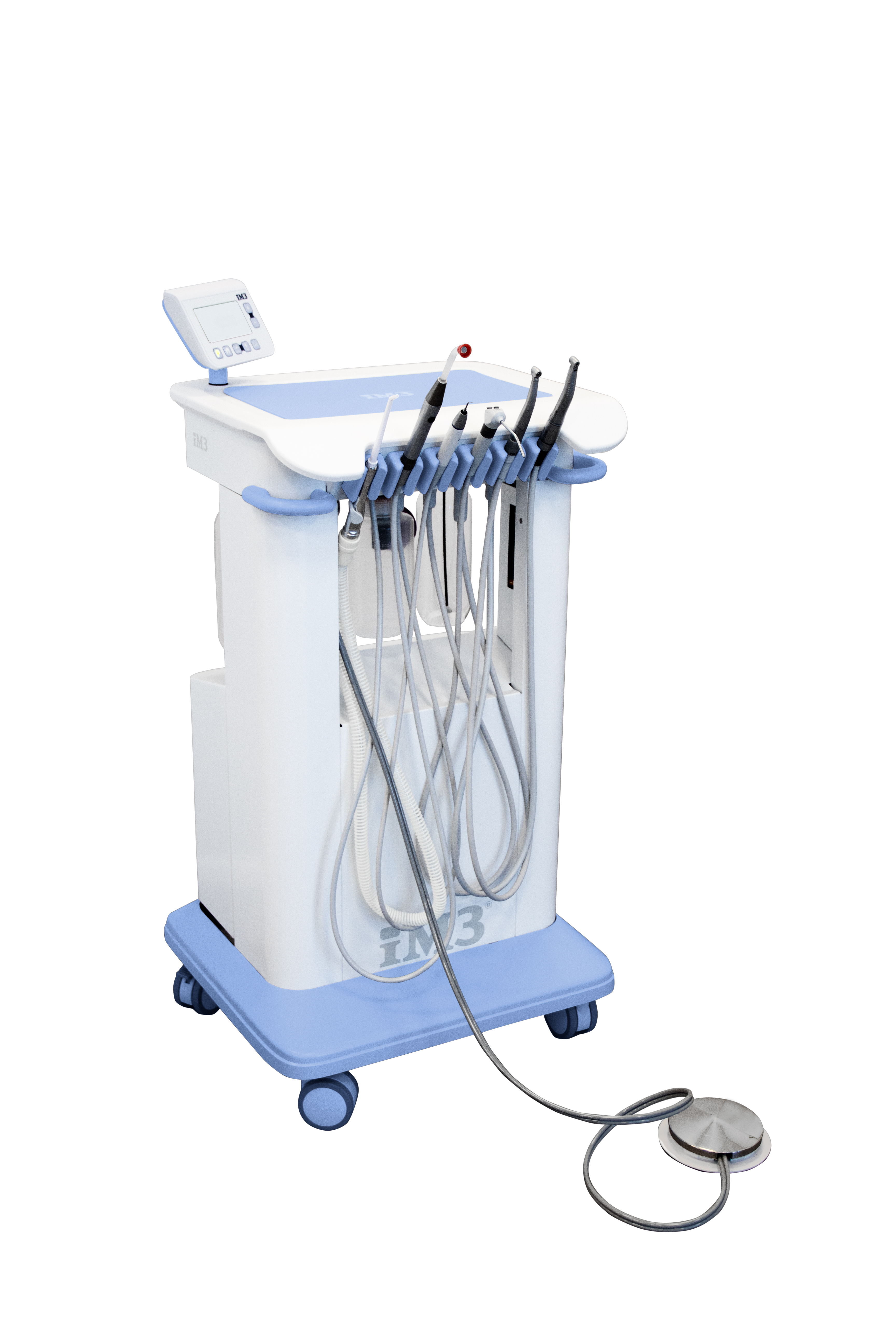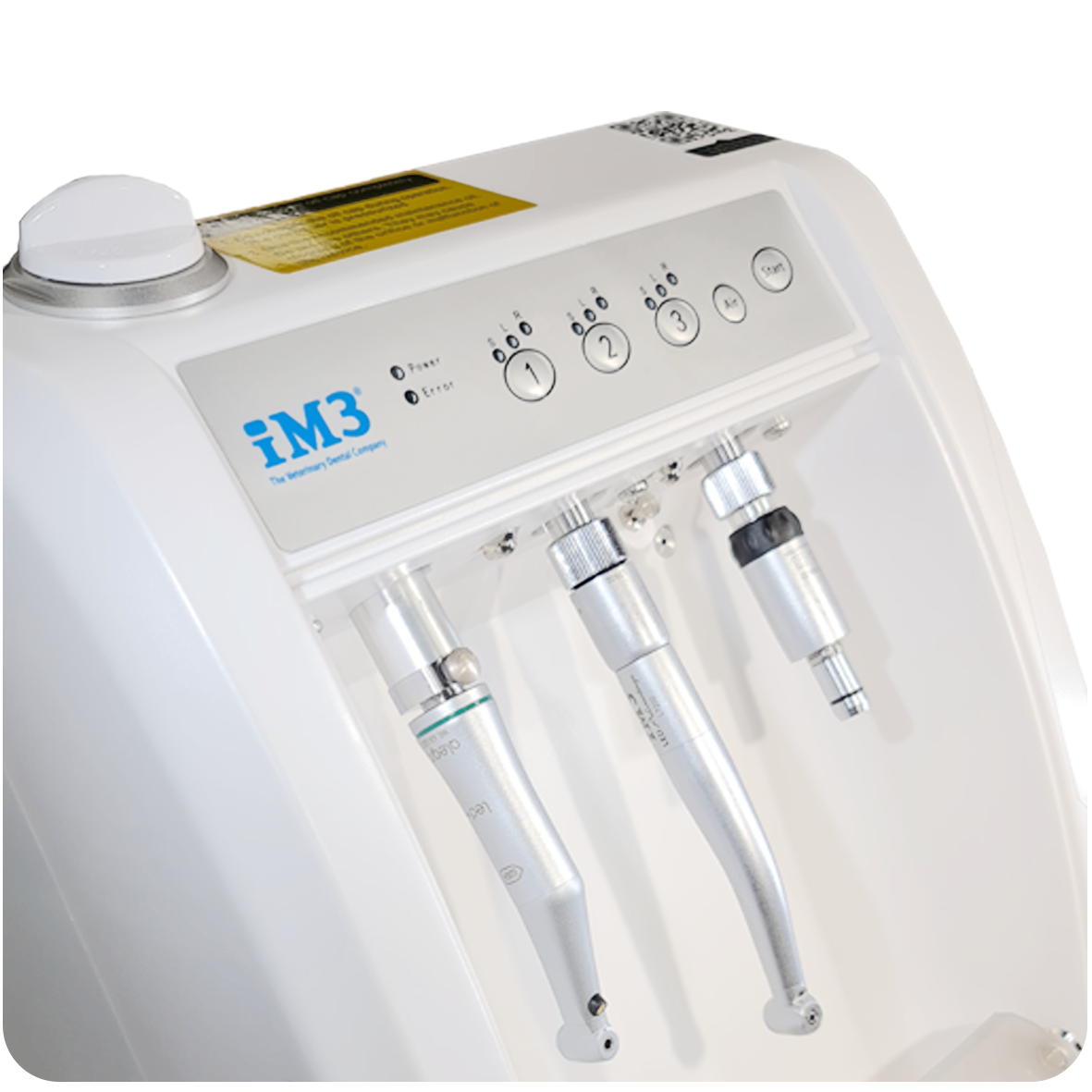Part 2: Equipment Maintenance
Practical Tips Series to Improve Your Efficiency in Veterinary Dentistry
by Maggie Burley, Clinic Support & Education, iM3 | 15 Aug 2024

Reliability and longevity – the two things you want from your dental equipment. To have it working when you need it most, and avoiding down-time lost while waiting for replacement parts or repairs. These tips will help to ensure your equipment is in the best condition to help you provide treatment for your patients.
Maintenance & Service Regimes
‘Dental Month’ has rolled around once more and this is the ideal prompt to check that all of your equipment has undergone its proper maintenance and service. The manufacturer of the equipment you use will provide you with the right information to properly care for and maintain your equipment

1: Routine Dental Unit and Compressor Care & Maintenance
Any machine with moving parts requires ongoing maintenance to ensure its best performance and your dental unit is no exception. Prioritise maintenance regimes following your manufacturer’s recommendations for daily, monthly & annual service.
To ensure the safety of your team, antibacterial routine cleaning, flushing of all waterlines and filter replacement is a must-do. Biofilm is made up of odour-causing bacterial colonies that adhere to the internal plumbing walls in dental units. If not properly treated, all waterlines and valves become coated with this bacteria that grows exponentially at room temperature and contaminates the water. The result is unpleasant odours and unsafe water.
Handpieces should be regularly oiled to protect the motor and turbine, with a spare handpiece on hand to eliminate downtime when a damaged handpiece is sent for repair.

2: Ultrasonic Scalers & Other Ancillary Equipment
The use of worn scaler tips result in inefficient or ineffective performance for cleaning the tooth’s surface. Scaler tips require regular checking for wear and replaced on average every 4-6 months.
Troubleshoot any reduction in performance from either tip wear, O-ring or filter failure or loose-fitting parts. Generally, check all lines and connections to and from the system. A loose plug or connection will often create problems.

Don't know what type of scaler tip do you need? Use our visual guide here to easily identify which tips are compatible with your scaler handpiece.

3: Dental Radiographic Equipment
Include in your regular care & maintenance routine, the proper care for your dental x-ray equipment. Refer to your State legislation with regards to compliance requirements.
Contact your supplier to be across any software updates to keep your system up to date and current, along with being well-supported.

Review all CR Plates or DR Sensors for wear and tear or damage and replace as needed. Inspect for artefacts caused through contamination and clean appropriately, and include testing the integrity of your radiographic personal protection equipment. Keep in mind that there is a certain life-expectancy on your equipment and refer to your supplier for advice

All staff should have access to and have read the manuals for the equipment in your practice – and in particular the Maintenance Recommended and the Troubleshooting Guide – don’t wait until its too late! Downtime due to equipment failure is costly to a business in lost revenue & profit, the cost incurred for equipment repair and reputational damage.
The manufacturer of your equipment are the go-to for your team to provide the best advice on the proper care and maintenance of your equipment.
Service & Maintenance
Improve the operation of your dental equipment with iM3 Straw
The treatment you trust, the convenience you count on. The Straw is simple to use and is compatible with any sized dental bottle and installation only takes a minute with its new Luer Lock fitting. Use only with distilled water.

The Straw provides built-in shock treatment for your dental unit, along with year round protection as its internal pre-treatment reduces impurities in the water of your unit. The Straw gives reliable year round disinfection and is easy to use reducing human error in its use.

It is safe, non-toxic and non-corrosive and meets BMP compliance and does not contain oxidizers such iodine or chlorine which have been shown to release mercury into dental waste water. The Straw is safe to use in restorative procedures as it does not adversely affect composite bond strength.

Here you can find a video presentation on the need for the iM3 Straw, how the it works and how to fit it on your dental unit.
The next instalment in this series will focus on improving efficiency in your dental practice and workflow within your dental workspace.
If you have any questions about our veterinary dental equipment range, service or maintenance you can contact us at support@im3dental.com.



